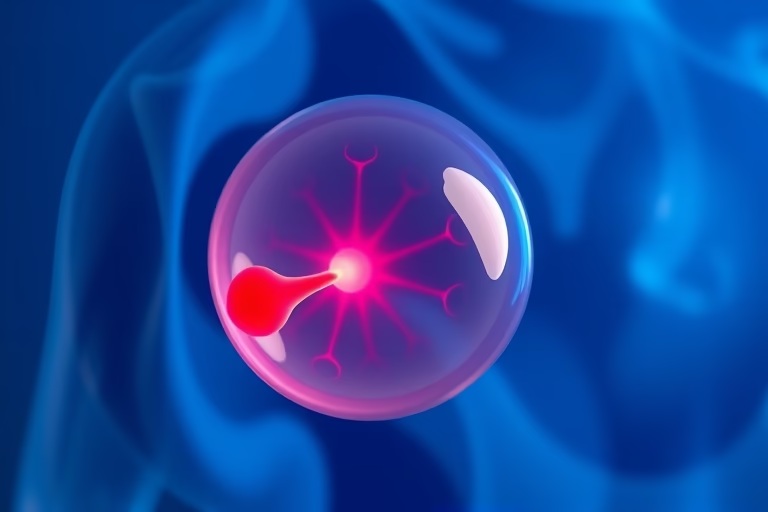Understanding Implantation Bleeding After Frozen Embryo Transfer
When discussing the journey of fertility and conception, one critical aspect to consider is implantation bleeding following a frozen embryo transfer (FET). This phenomenon can be both exciting and confusing for individuals or couples trying to conceive. Implantation bleeding occurs when a fertilized egg attaches itself to the lining of the uterus, often leading to light spotting or bleeding. This typically happens about six to twelve days after conception, which aligns with when a frozen embryo has been successfully implanted in the uterus.
For many, this event signifies the body’s response to pregnancy, but there are complexities involved. Understanding the timing, symptoms, and factors influencing implantation bleeding after frozen embryo transfer can empower many in their conception journeys. In this article, we will explore various essential subtopics to provide comprehensive insights into what implantation bleeding after frozen embryo transfer entails.
What is Frozen Embryo Transfer?
Frozen embryo transfer is a procedure used during in vitro fertilization (IVF) where previously harvested eggs are fertilized and allowed to develop into embryos. These embryos can be frozen for future use. The transfer is usually planned at a later date to optimize the chances of successful implantation and pregnancy.
Many patients choose frozen embryo transfer due to its many advantages. It allows the uterine lining to properly prepare for implantation, increasing the chances of pregnancy. The embryos can be cultured to a blastocyst stage, which is often associated with higher success rates when returned to the uterus. The procedure itself is generally straightforward and performed in a clinic setting.
Understanding frozen embryo transfer sets the stage for comprehending the process leading up to implantation bleeding. The nuances of embryo health, hormonal influences, and uterine readiness are all key factors to explore.
Is Implantation Bleeding Normal?
Experiencing implantation bleeding is quite common and generally considered a normal part of early pregnancy. Many women report slight spotting or light bleeding, which can easily be mistaken for a menstrual period. However, it’s crucial to understand that implantation bleeding usually occurs earlier than menstrual bleeding and is generally much lighter.
Symptoms of implantation bleeding often include:
- Light spotting that may be pink or brown rather than bright red.
- Short duration, typically lasting only a few hours to a couple of days.
- Minimal to no cramping.
If you notice unexpected or heavy bleeding, it is essential to consult with a healthcare provider. Recognizing what is normal and what might require medical attention can be vital in your pregnancy journey.
Identifying the Timing of Implantation Bleeding
Timing plays a significant role in identifying implantation bleeding after a frozen embryo transfer. Generally, this bleeding occurs about 6-12 days post-ovulation, which can correspond to a few days before an expected menstrual period.
If a frozen embryo transfer is timed correctly, the embryo should implant into the uterus lining around the same timeframe. Many women find that keeping track of their menstrual cycle and any fertility treatments helps to predict the likelihood of experiencing implantation bleeding.
This timing can vary based on individual cycles and how the embryo develops post-transfer. Familiarizing yourself with your body’s signals during this time can provide clarity on whether any bleeding is typical or if further evaluation is needed.
The Difference Between Implantation Bleeding and Menstrual Period
Understanding the difference between implantation bleeding and a menstrual period can significantly affect how one interprets their body signals during early pregnancy. There are distinct characteristics that set them apart:
- Color: Implantation bleeding is often light pink or brown, while menstrual blood tends to be a brighter red.
- Flow: Implantation bleeding is usually very light, less than what is experienced during a period, and does not involve heavy flow.
- Duration: Implantation bleeding can last from a few hours to a couple of days. Menstrual periods usually last longer, typically 3 to 7 days.
Recognizing these differences can help in identifying whether one may be experiencing implantation bleeding, which could lead to further investigation or testing, such as a home pregnancy test.
Causes of Implantation Bleeding
The causes of implantation bleeding are primarily linked to the biology of pregnancy. When a fertilized egg attaches to the uterine lining, it can cause minor injuries to the small blood vessels in that area. This slight disruption can result in light bleeding or spotting.
Factors that may influence implantation bleeding include:
- Embryo Quality: Higher-quality embryos are often more successful in implantation, possibly leading to observable implantation bleeding.
- Uterine Environment: A healthy uterine lining that is well-prepared will aid in the implantation process, which can impact the occurrence of bleeding.
- Hormonal Changes: Changes in hormone levels following embryo transfer may play a role in how your body responds post-implantation.
Awareness of these factors can help in understanding the biological processes contributing to implantation bleeding after frozen embryo transfer.
When to Consult a Doctor
Knowing when to seek medical guidance is vital in any health-related journey, especially when pregnancy is a potential outcome. If you experience significant bleeding, heavy cramps, or fever, it is advisable to contact your healthcare provider immediately.
Some circumstances that warrant a medical consultation include:
- Heavy bleeding: If the bleeding resembles menstrual flow or requires a pad, seek medical assistance.
- Severe cramping: While light cramping can be normal, significant discomfort should never be ignored.
- Persistent symptoms: If symptoms last longer than a typical implantation bleeding episode, further evaluation is crucial.
A healthcare provider will assess the situation and recommend further testing or treatment options if necessary. Being proactive in these situations can ensure that both maternal and fetal health remains the priority.
How to Prepare for a Frozen Embryo Transfer
Preparation for a frozen embryo transfer involves several steps to improve the chances of successful implantation and minimize complications.
- Health Assessments: It’s essential to have a thorough health evaluation, including hormonal level checks.
- Lifestyle Changes: Consider adopting a healthier diet, reducing alcohol consumption, and quitting smoking.
- Medication: Follow your healthcare provider’s recommendations for any necessary medications, including prenatal vitamins and additional hormonal therapies.
Being well-prepared can create a favorable environment for embryo implantation. It’s crucial for patients to stay informed and communicate openly with their healthcare professionals during this process.
Final Thoughts
Understanding implantation bleeding after frozen embryo transfer can be an essential aspect of your reproductive health journey. This phenomenon, while often normal, comes with a myriad of factors influencing its appearance, timing, and symptoms. From recognizing the distinctions between implantation bleeding and menstrual flow to knowing when a healthcare consultation is warranted, every detail plays a vital role in the overall experience.
Frozen embryo transfer serves as an effective method for many attempting to conceive, and understanding its implications, including the potential for implantation bleeding, is crucial. Preparing for the transfer and maintaining open communication with healthcare providers can significantly improve outcomes. Following the procedures, understanding personal physiological responses to changes, and being mindful of various symptoms can empower individuals and couples during this sensitive time.
It is important not only to be aware of the physical signs but also to remain emotionally and mentally equipped to handle the ups and downs of this journey. Keeping a record of any changes can be useful during consultations with healthcare professionals.
If you are facing challenges relating to frozen embryo transfer and are concerned about implantation bleeding, reaching out for support from medical professionals, support groups, or mental health experts can be beneficial. The journey to parenthood is unique for everyone, and having the right information and support is invaluable.
Frequently Asked Questions
What does implantation bleeding feel like?
Implantation bleeding typically involves light spotting that may be pink or brown in color. It usually does not involve heavy flow.
How long does implantation bleeding last?
Implantation bleeding can last anywhere from a few hours to a couple of days.
Can you have implantation bleeding after a frozen embryo transfer?
Yes, implantation bleeding can occur after a frozen embryo transfer as the embryo implants in the uterine lining.
Is it possible to miss implantation bleeding?
Some women may not notice implantation bleeding at all, as it can be very light and brief.
When should I seek medical advice regarding bleeding after embryo transfer?
If you experience heavy bleeding, severe cramps, or have concerns about your symptoms, it is essential to consult your healthcare provider.
Further Reading
What Type of Psychotherapy Is Best for Anxiety?







